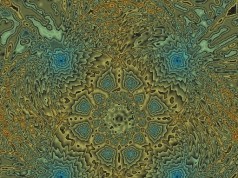What is the mind made of? We have progressed enormously as far as the brain objects are concerned: neurons, axons, dendrites, glial cells, neurohormones, various organs and substructures in the brain, etc.
But is there a broad mathematical framework to envision how this is all organized? There is! Category Theory! It turns out it’s a good first order approximation of mind organization. At least, so I claim.
Category Theory is about diagrams. Category Theory has been increasingly replacing advantageously Set Theory. It’s not only because Category Theory does not have to ponder the nature of objects, elements, sets.
Category Theory was long derided as “abstract nonsense” and “diagram chasing”. But it gives very deep, powerful theorems.
https://en.wikipedia.org/wiki/Category_(mathematics)
I claim the powerful theorems of Category Theory should translate directly into. neurology.
Amusingly, although I accused Aristotle to have demolished democracy and fostered plutocracy through his beloved pets, the mass murdering criminal plutocratic psychopaths, Alexander and Antipater, I recognize humbly that it’s the same Aristotle who invented categories (thus making him a great thinker, and justifying an Aristotle cult among those who need to have cults to feel good about themselves).
Aristotle’s meta-idea about categories was just to talk about the most fundamental notions:
https://en.wikipedia.org/wiki/Categories_(Aristotle)
The present essay was suggested, and is an extension of what the honorable Bill Skaggs seems to have wanted to say, in Scientia Salon, in his “Identity A Neurobiological Perspective”. (As far as I can comprehend.)
However, forget Theseus’ ship and Hollywood’s Star Trek “Transporter”. As I said in “Quantum Identity Is Strong”, Quantum Identity is not erasable, and makes those time honored examples impossibly disconnected with reality. The notion of identity has thus to be found elsewhere (as we intuitively know that there is such a notion).
According to modern Quantum Field Theory, we are made, at the most fundamental level, of fluctuating fields. They come and go, out of nowhere. So, that way, we are continually been deconstructed and rebuilt. The question naturally arises: what is preserved of me, as a set of Quantum Fields? Well, the most fundamental mathematical structure is preserved.
The same seems to hold, to a great extent, in neurobiology, as neuro circuitry, to some extent, seems to come, go, and come back.
Thus we are all like old wooden Greek ships, perpetually falling apart, and rebuilt.
To some extent, this is what happens to species, through reproduction: cells split, and reproduce themselves, thanks to DNA.
A species has identity. Yet that identity is made of DISCONTINUOUS elements: the individuals who incarnate the species, who are born, and then die. And others appear, just the same, sort of. How is that possible?
A species’ identity is its structure. Just as a neurology, or an elementary particle identity is its structure. Not just a geometric structure, not just a topological structure, but its structure, as the most fundamental notion, as a category.
So what is preserved? Shape. And how to morph said shapes. Naturally (there is a notion of natural transformation, in Category Theory).
Historically, analyzing shape was systematized by the Greeks: Euclidean geometry, cones, etc. Then, at the end of the Nineteenth Century, it was found that geometry studied shapes mostly by studying distance, and yet, even if distance was denied consideration, there was a more fundamental notion of shape, topology. That was the structure of shapes as defined by neighborhoods.
Two generations later, Category Theory arrived. Category Theory is about morphisms, and the structures which can be built with them. Please listen to the semantics: structures, morphing. This is all about shapes reduced to their most basic, simplest symbolic expression. It’s no wonder that it would come in handy to visualize neurological structures.
A morphism is a pair of “objects” (CT leaves unspecified what the “objects” are). To model that neurologically, we can just identify ‘objects’ to neurons (or other neurological structures), and morphisms to axons (although dendrites, and more, could be included, in a second stage, when the categoretical modelling become more precise).
The better model is category theory. When are two diagrams equivalent? When are they IDENTICAL? Cantor defined as of the same cardinal two sets in a bijection (a bijection is a 1 to 1, onto map).
Category Theory defines as identical the same diagram (a drawing reduced to its simplest essence). Say: A;B;C;D;A is the same as E;F;G;H;E.
Thus, when are two diagrams identical in category theory? When they are modelled by the same neuronal network. (Or, more exactly, axonal network: make each arrow “;” above, into an axon.) And reciprocally!
Discussing the mind will involve discussing the most fundamental structures constituting it. What better place to start, than the most basic of maths? Especially if it looks readily convertible in neural networks.
Category Theory is the most fundamental theoretical structure we know of. It is the essence of identity, and identification. In conclusion, two objects are identical, neurologically, and in fundamental physics, if they are so, in category theory.
Time to learn something categorically new!
Patrice Ayme
Note: No True Isolated Rocks: In other news, and to address a point of Bill Skaggs, whether a rock can be truly isolated is an open problem, experimentally speaking.
According to the theory of gravitation of Einstein and company, a rock cannot be isolated. Why? Because the rock is immersed in spacetime. Spacetime is animated by gravitational waves: this is what the Einstein Field Equation implies. Now, according to an unproven, but hoped-for principle of fundamental physics, to each force field is associated a particle. In the case of gravity, that hoped-for particle is called the graviton. “Particle” means a “particular” effect. Thus, an isolated rock, according to established theory, and hoped-for theory, ought to be adorned occasionally with a new particle, a new graviton, thus ought not to be isolated.
In my own theory, Objective Quantum Physics, on top of the preceding standard effect, resolving Quantum Entanglements, ought to create even more particles in “isolated” rocks.





